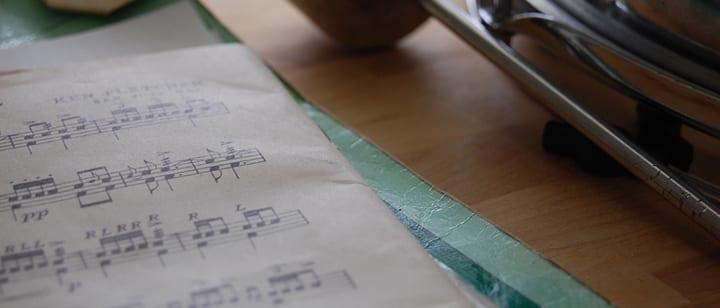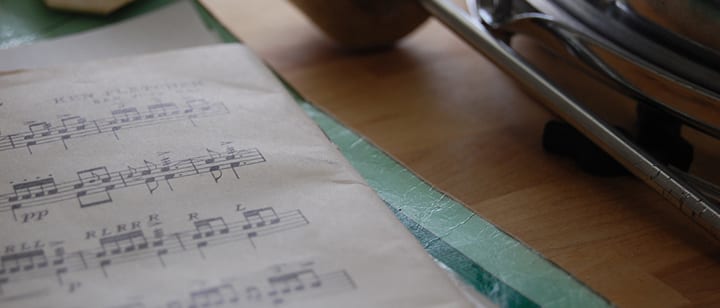As a drummer, you might be faced with sight reading as you practice and audition. Here, San Diego, CA teacher Maegan W. shares her tips for sight reading practice…
There are two types of drummers: those who read music, and ones who don’t. I have met so many talented drummers who have decided they can’t or won’t read music, and never even give themselves a chance to try. Charts and sight reading can be overwhelming, but is a useful skill, and one that is easy if you do it right.
Before we get into the tips, however, consider the mental aspect. If you say you can’t read music, then you can’t. Your mind will instantly close off from the possibility, making it something “out there” and impossible. Make a decision to allow yourself to learn to read, and you will create the proper mental state to do so.
Here are some tricks I use to make sight reading practice a lot easier:
- When I receive a chart, the first thing I do is look throughout the whole thing to see how many pages it is and what the tempo or tempos are (any time changes).
- I see if the feel or style is notated and if it changes throughout the song — and internalize it before trying to play anything.
- I then take a highlighter and get to work. I highlight all the “Road mapping,” codas, DS’s, alternate endings, and anything that tells me where to go next so that my eye can easily see it.
- I take a pencil or pen and circle important hits or fills, so I can be prepared for them as I am playing. Also, there will often be changes at the last minute that you will want to notate.
I hope this was helpful. Please leave questions, comments, and your own helpful pointers below.
 Maegan W. teaches drums, songwriting, and more in San Diego, CA. She earned a degree in Percussion from the Musician’s Institute, and has been teaching private lessons since 2004. Learn more about Maegan here!
Maegan W. teaches drums, songwriting, and more in San Diego, CA. She earned a degree in Percussion from the Musician’s Institute, and has been teaching private lessons since 2004. Learn more about Maegan here!
 Photo by J Jackson Foto
Photo by J Jackson Foto
Suzy S.

